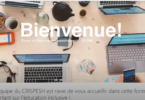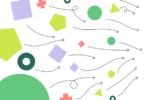Comment apprenons-nous? Voilà un sujet que nombre de chercheurs en psychologie et en éducation tentent de cerner depuis des décennies. Il existe donc une foule de théories et de principes pour expliquer cet acte à la fois simple et complexe que celui d’apprendre.
L’article de l’ex-enseignant Adam Lupu, sur lequel je suis tombé dernièrement, m’est apparu intéressant pour tout enseignant qui désire valider ce qu’il veut faire apprendre à ses étudiants. Lupu nous donne ici son canevas d’analyse basé sur trois piliers sur lesquels il s’appuie lorsqu’il passe en revue ses propres expériences d’apprentissage.
- Construction. Learning happens when we build or make things. In addition to the physical or digital output of our work (and what we have to learn in order to complete them), we are also forced to construct new mental models, analogies, memories, and synaptic connections while we build or create things to add to our world. For more research on this you can start with the wikipedia article on constructivism and dive as deep as you like.
- Cognition. Learning happens when we think things. We make observations, we process feedback from our environment, we simulate and predict and then we update our predictions. All of this is really hard to see (since it’s often just a facial expression of being “lost in thought”), so we have come up with things like tests and assessments to try to get at how people have started thinking differently based on readings, observations, and conversations. There’s still a lot more to learn about how we think and how we modify our thinking over time. For more on this pillar of research take a look at the fields of cognitive science or embodied cognition.
- Community. Learning happens when we want to survive and thrive amongst a group of people that have a shared collection of practices. Maybe we want to be able to do what they do (example: “I want to become a baseball player”). Maybe we just want to be accepted by people who validate our identity (example: “He’s a funny guy”). Humans are tremendously good at observation, imitation, and innovation (in that order). If you’re reading this, you’ve already learned to survive in multiple physical and digital communities through this process, and it can really accelerate your continued learning if applied deliberately. For more on this, you could start with Situated Learning.
L’enseignant qui prépare son cours pourrait tirer profit de ce canevas. Il pourrait valider ses activités pédagogiques et exercices en imaginant ses étudiants se poser des questions issues de ces trois piliers.
Construction Check:
- Is there something I can make or create to practice what I’m trying to learn? (…)
- Based on what I’m currently making or produce, what am I learning and how is that shaping my thinking?
Cognition Check:
- Am I getting feedback on my work? Am I reflecting on that feedback?
- Am I returning to those reflections over time to create new mental models that I can apply to future work/learning?
Community Check:
- Do I have role models? Do I have mentors?
- What am I unconsciously learning from the people around me?
- Who do I need to spend more time with to learn what I want to learn?
L’enseignant pourrait aussi proposer des questions similaires à ses étudiants lorsqu’il leur présente ses consignes. Il les inviterait alors à inclure une section de réflexion sur leur apprentissage dans leur travail. Cette section deviendrait une sorte de rétroaction de l’étudiant vers l’enseignant permettant à ce dernier de s’ajuster… et d’apprendre!
Source:
Lupu, Adam. « How do people learn most effectively », Forbes (citant une réponse de l’auteur sur le site Quora), 20 novembre 2017
Daniel a longtemps été occupé à analyser et concevoir des formations tous azimuts. Il essaie aujourd'hui de faire connaître ses découvertes pédagogiques aux personnes formatrices à la recherche de solutions concrètes.






